Manna MomentGod created the the sun, moon, and stars on the fourth day of creation (Genesis 1:16). We’ve already looked at the many ways God uses the Sun to provide for life on Earth but did you know that the Sun is only one of the multitude of special stars that God created and named? Review of the Sun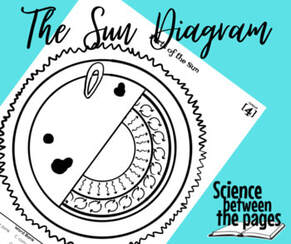 To test the student's knowledge of the parts of the sun, I gave them this diagram. Seasons and Orbit of the EarthWhat is a Star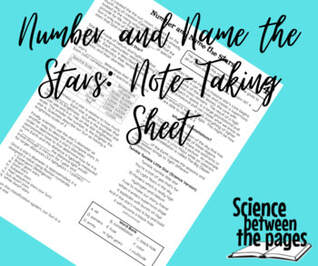 Have you heard the classic lullaby Twinkle, Twinkle Little Star? Here is a science version I found on Adcouncil.org It goes like this: Twinkle, twinkle little star You're a ball of gas that's far 32 light years in the sky 10 parsecs which is really high Hydrogen and Helium Fuse to make our starry friend When it enters supernova stage it explodes with bursts of rays And if the star's mass is big and bold It will become a black hole Throughout our note taking guide today, we defined what many of these terms and learned about what a star is, what are constellations and what asterisms are. We learned that God has named all the stars and we have tried to name them according to the categories they fall into. First of all, stars are balls of gas that are really far. Hydrogen and Helium are gases that fuse within a star and create a thermonuclear reaction that powers the star. This is the same with our sun. Scientists categorize stars by their color/temperature, their brightness and their approximate diameter. Scientists use these letters in this order to tell us how hot a star is O B A F G K M I challenged the students to come up with an initialism to remember these letters as the O is the hottest star that is blue/violet while the M is the coolest star at red. Our sun is a G on the temperature scale and it is a yellow star. We came up with: Oh Boy Astronomy Feeds Great Kind Minds There is a spot on the note taking sheet for you to come up with your own initialism. A star's brightness is based on a number scale where the smaller the number, the brighter the star. How big a star is, is categorized by roman numerals with roman numeral I being a supergiant like Betelgeuse. Constellation versus asterismIn 1930 there was an Astronomical Society that decided to categorize all the stars into 88 constellations. Therefore there are only 88 constellations. A constellation is a region of the sky with stars. The stars don't have to be part of a picture to be within the constellation. Should a group of stars create a picture like the Big Dipper, it would then be called an asterism. However, constellation is used interchangeably for Big Dipper and Ursa Major. This is probably fine, I just found it interesting the difference. How do you find the North Star?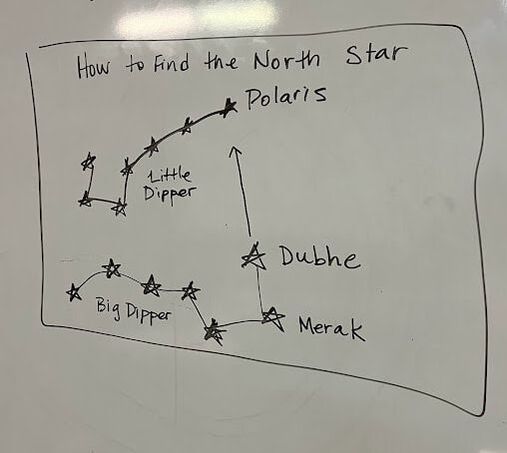 I drew this picture on the board to help show the students how to find the North Star, Polaris. First you would locate the Big Dipper and find the stars Merak and Dubhe. These two stars will point straight to Polaris which is on the handle of the little dipper. I had the students draw this on black construction paper with white map pencils. I gave them star stickers to put in place of the stars if they wanted.
0 Comments
Manna momentGenesis 1:16- "Then God made two great lights: the greater light to rule the day..." Great is God's faithfulness! Since Creation, the Sun has never ceased to shine upon the Earth with the exception of a few supernatural events in scripture. Even in the darkest night, the Sun is shining on another part of the world. This reminds me of how our God never sleeps and is always taking care of us. Great is His Faithfulness! sun basics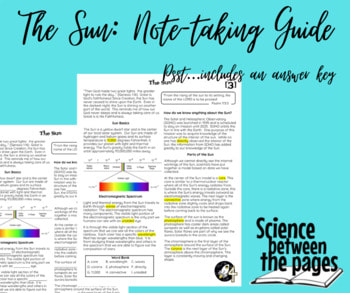
There are many kinds of waves that form the electromagnetic spectrum. The only part that we can see with our unaided eye is the visible light section of the spectrum. It is from studying these wavelengths that we are able to figure out the composition of stars, planets, comets, and galaxies. How do we know anything about the sun? Its so bright and Hot!!There is a Solar and Heliospheric Observatory (SOHO) that orbits the Sun in the same line as the Earth. It was first launched in 1995 but has been extended several times and will, at this time, remain until 2025. One of the purposes of this mission was to acquire knowledge of the structure of the interior of the sun. While no one can observe the interior, the information gathered from SOHO has been incredibly helpful. For more information about this mission visit here. Parts of the Sun ModelI gave this to the students to do on their own to review the parts of the sun. You can check it out here. 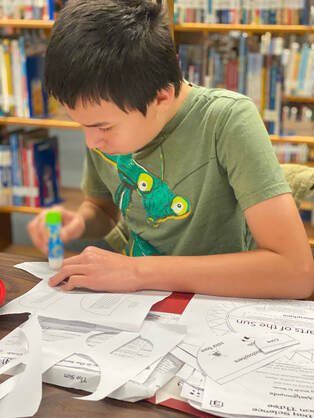 My students are awesome and their parents are amazing!!! Way to get after this homework on a day when the sun isn't out! How large is the Diameter of the sun?Our in class investigation today was to see if we could find the diameter of the sun. The only materials needed are:
Procedure: The students were to first draw a 2mm circle on one of their index cards. Then in the other index card, they were to poke a pin hole into it. We went outside on a bright, sunny day and used the pin hole to try and match the size of the 2mm circle. When that happened, a partner was to measure the distance between the two cards in millimeters. We then divided 186,000,000 by our number in millimeters to get the estimated diameter of the sun. To see how accurate your number was, you can then divide your number by 864,000 to get a percentage. The closest to 100% is how well you did your measuring and calculating. We made an investigation sheet based off the experiment in the 77 Fairly Safe Science Activities for Illustrating Bible Lessons by Donald B DeYoung. This is one of my favorite books for getting science activities from. There is a scripture, explanation of the activity, the science behind it and a biblical application. 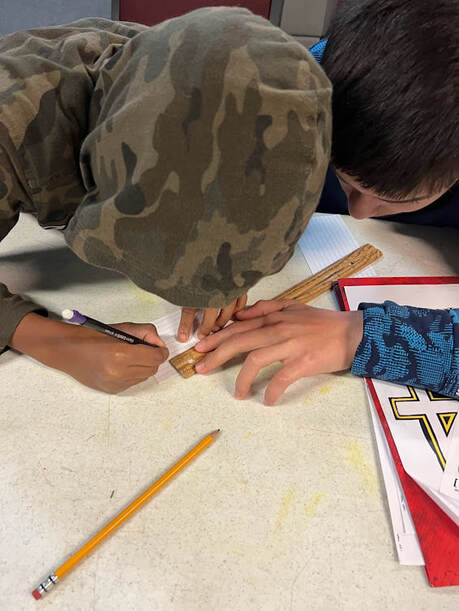 A 2mm circle is very hard to draw. It is soooo small. They did a great job though. 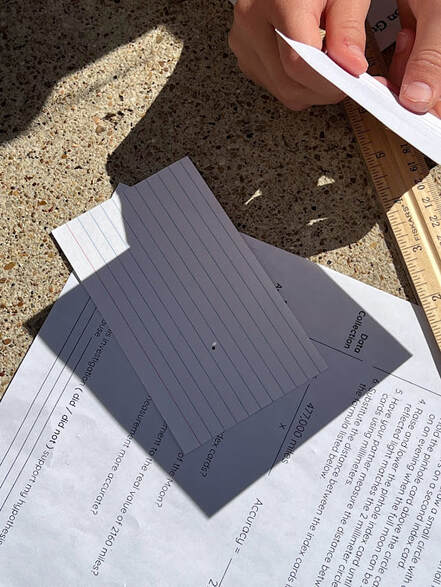 They are to match the size of the light going through the pin hole with the 2mm circle. 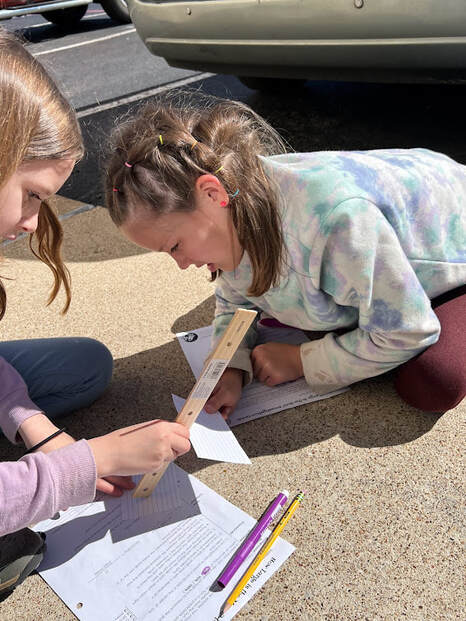 Once they matched the light from the pin hole with the 2mm circle, they are to measure the distance between the index cards. They will use this number in the division problem mentioned above. Genesis 1:3-4 -"And God said, "Let there be light," and there was light. And God saw that the light was good. And God separated the light from the darkness." Opening activityUsing the information from the Astronomy timeline last week, I had the students get together and put in order the different pictures of the men that made discoveries in astronomy since the beginning of time. There are numerous women that have made significant contributions as well, and I can't wait to add them in at a later time. A study of light note taking guide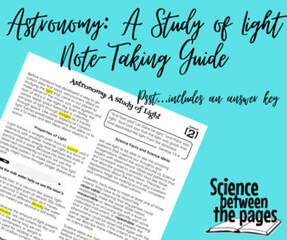 In this note taking guide, you will find several properties of light. And as we were going through the information, I would pause and do a demonstration with that property of light. Light behaves like a particle and a wave. Place a teaspoon of milk powder in a glass pan filled halfway with water. This will make the water cloudy. Shine a red pointer throughout the room and make an observation. Could you see the path the light traveled in? Did it travel in a straight line? Now place the pointer on the side of the glass pan and shine the red light through the cloudy water. Could you see the path the light traveled in? DId it travel in a straight line? Another property of light is that it travels fast. Light travels 300 million meters per second and slows down slightly through materials of different density. Light is bright. We use lumens to measure the brightness of light. The Sun is 35 octillion lumens which is 35 with 27 zeros after it (35,000,000,000,000,000,000,000,000,000) Light travels in a straight path but can change directions depending on the type of material the light encounters. During class, we used mirrors to reflect the light of the flashlight and demonstrate how the light can change directions. Many large telescopes and satellites use different types of mirrors to study the night sky. Science Facts versus science ideas In order for something that we read or hear about in science to actually be a fact, it must be observable- meaning that any person could reasonably make the same observation, measurable- describable with a level of consistency or with a calibrated instrument. and/or repeatable- meaning that if the same conditions are present, the phenomena could be observable again with the same range of results. Science ideas, however, are rooted in the person or people's shared worldview. If we believe that God created the Sun, Moon, and Stars on the fourth day then our interpretation of data will align with our worldview of creation by God. However, if we don't believe God is Creator then our interpretations will be void of God and His creation. As you can see, the creation of the world is NOT observable, therefore both of these are simply science ideas based on different worldviews. One of my favorite places to check facts I read in the news is the Institute of Creation Research (https://www.icr.org/ ) or Answers in Genesis. Both of these align with my worldview that God created the universe in 6 days and are backed by creation scientists with the same worldview. Mitten investigation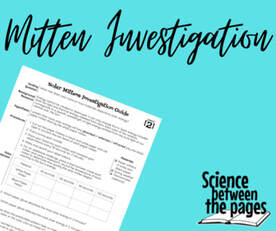 To test and see how light and heat can be absorbed, here is a mitten investigation. You will cut out a white mitten and a black mitten. You can cut out all the colors of the rainbow mittens if you wanted to and see which colors absorb the most light and heat. This can be measured using a thermometer. For the next 12 weeks, we will be studying what God created on the fourth day of Creation, the sun, moon and stars. opening activityOur first activity for class was putting together different puzzles of significant people who have made a considerable impact on what we study today in Astronomy. I picked the puzzle activity because it seemed to me as I researched the history of astronomy that each significant person had one piece of the puzzle that is coming together even more today. Discovering how our world 'hangs' in space, moves in space and exists compared to other celestial bodies is very fascinating. When you look at the timeline of discoveries in Astronomy, at the beginning, these men and women had to wait hundreds of years for the next 'puzzle piece'. Even so, there is a plumb line through all the discoveries and miscalculations even and it is God and His Word. While science changes everyday, God and His Word do not change. I am so thankful that the Word of God is not a science textbook. If it were, it would need to be updated and changed frequently as our textbooks. Rather, in God's Word on multiple occasions has spoken to us about space, the stars, our planet with truths that were proved much later in history. Science Changes But God and His Word Does Not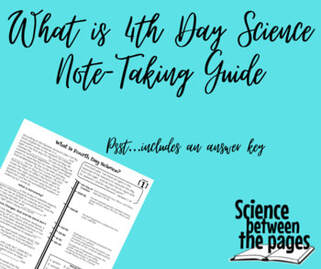 .Although the Bible is not a science textbook, it is a testimony of who God is and what He has done. There have been several instances in our history where scripture revealed a truth before scientists discovered evidence to support it. For example, God used Isaiah (Isaiah 40:22, 700 BC) to describe the Earth as a round object 200 years before Pythagoras first proposed it was a sphere. Likewise, God used Job (Job 26:7, 2,000 BC) to poetically describe how the Earth hangs on nothing–almost 4000 years prior to Isaac Newton’s formal law of gravitation was formalized. God also revealed through Isaiah that the heavens are stretched like a curtain and spreads them out like a tent–a truth about the expanding universe that Edwin Hubble wouldn’t observe evidence for until the 1920s. In all these ways and so many more, God has planted seeds of truth about Himself and His creation in His word that we might be encouraged that His Word is Truth and we can build our lives and our understanding of the universe around us on it. If you would like to listen to a 13 minute podcast by Dr. Jason Lisle about these topics, he explains these and a few others here light in space investigationWhile Astronomy is the study of celestial objects, space and the physical universe as a whole, much of Astronomy is actually the study of light. Using the information that we know about how light works, we are able to understand the composition of stars and how far away they are from us. Light travels in a straight path, however some materials make the light stop traveling and be absorbed, change directions and appear diffused or pass right through. We are going to investigate the adjectives to describe these different kinds of materials. Transparent- objects that are transparent allow light to pass through so that objects are clearly seen through it. Translucent- objects that are translucent allow only some light to pass through but detailed shapes cannot be seen through it. Opaque- objects where no light can pass through are called opaque. For our investigation, we used a page protector, some tissue paper and a piece of cardboard to figure out if it is transparent, translucent, or opaque. This is a relatively simple investigation where the student will be experientially knowledgable of the three vocabulary words above. The investigation is organized in the scientific method to expose students to the process of how to find answers to their science questions. Some of the data analysis questions will really make you think. For example: If we can see stars at night, what does that tell you about space? You can find this investigation sheet here. observation JournalWhat does the sky look like at night?
Can you identify some of the stars and planets? What time does the sun rise and set? Can you see a moon? What phase is it in? Hopefully after making a habit of checking on the sky, the students will become more familiar with the sun, moon and stars. Here is an observation journal sheet to get them started. |
Lead LearnerWelcome! My name is Nicole Fleming and I have been leading science learning in the Bryan/College Station homeschool community for over 10 years. Archives
April 2023
Categories |
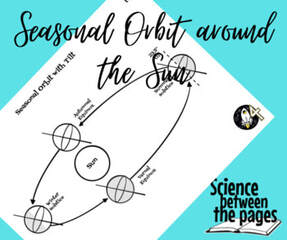
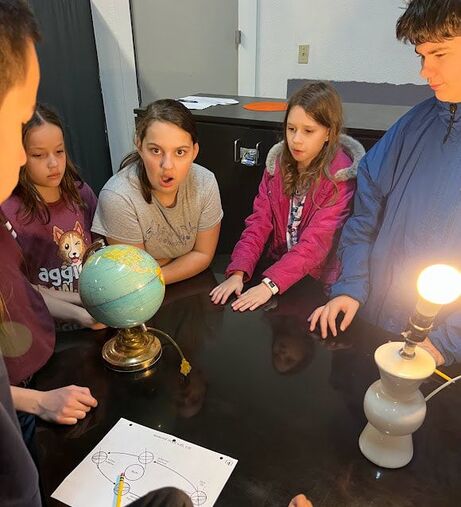
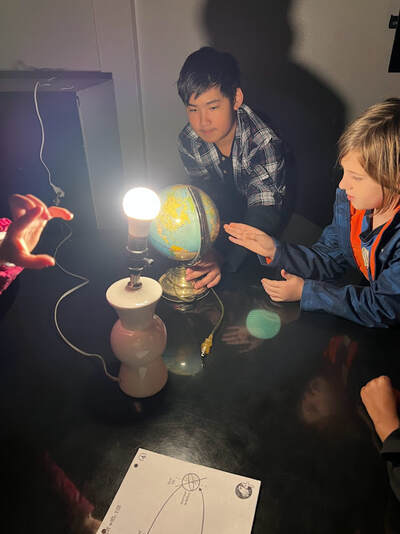
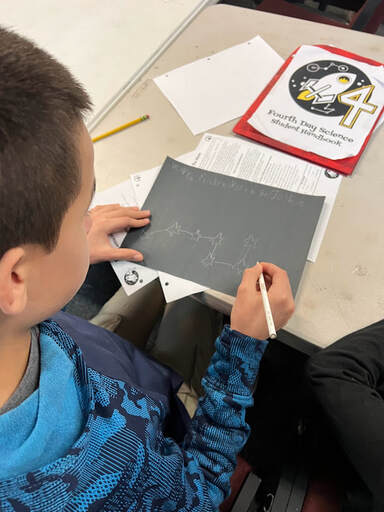
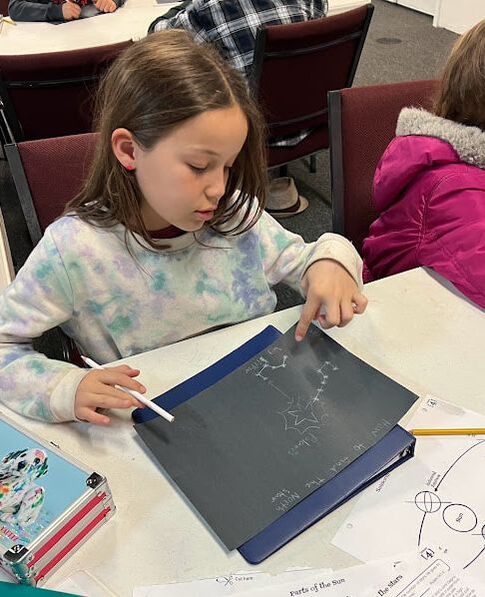
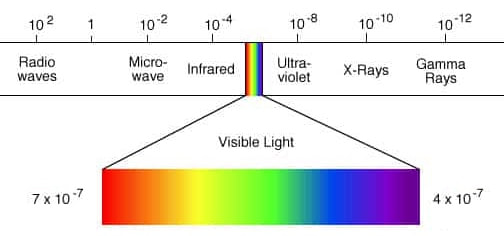
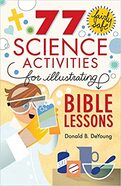
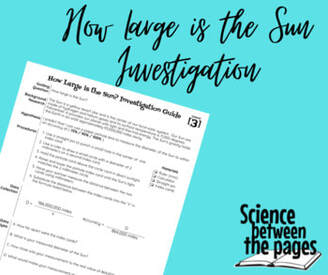
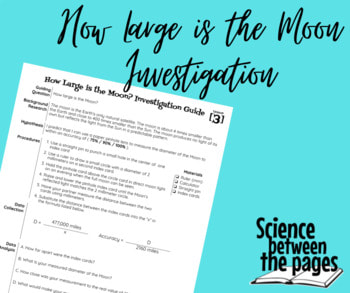
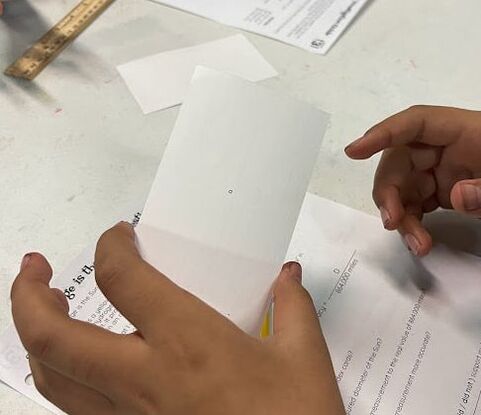
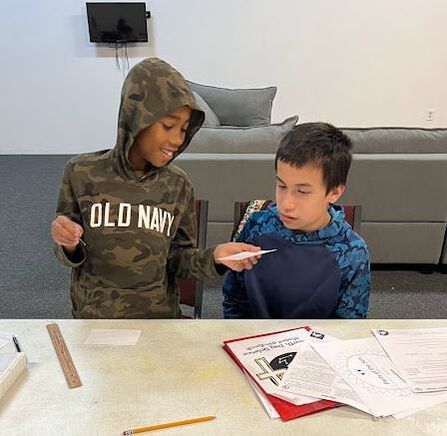
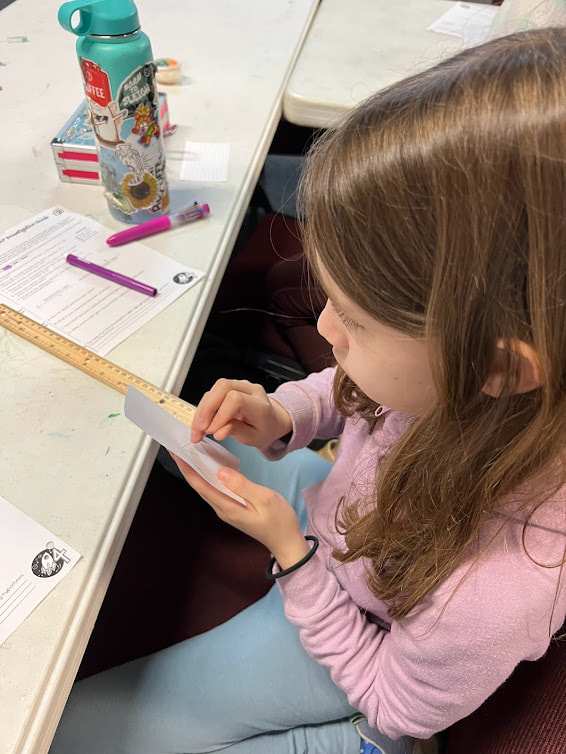
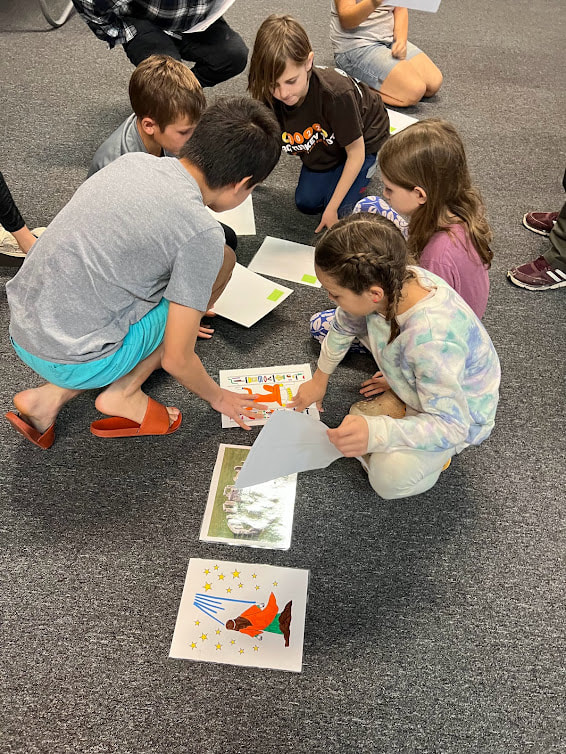
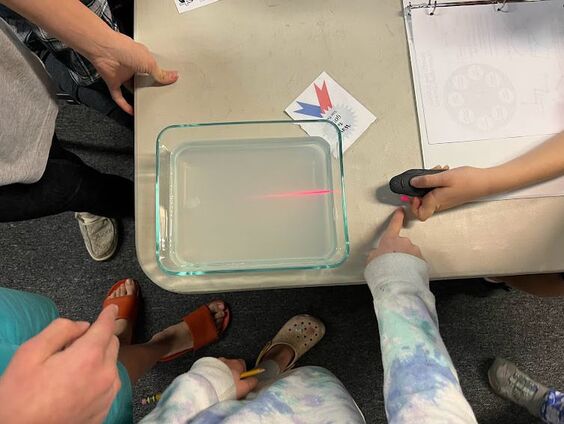
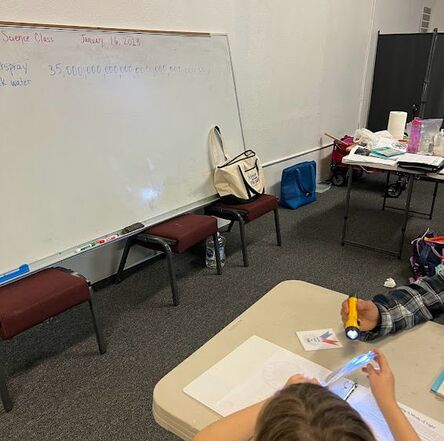
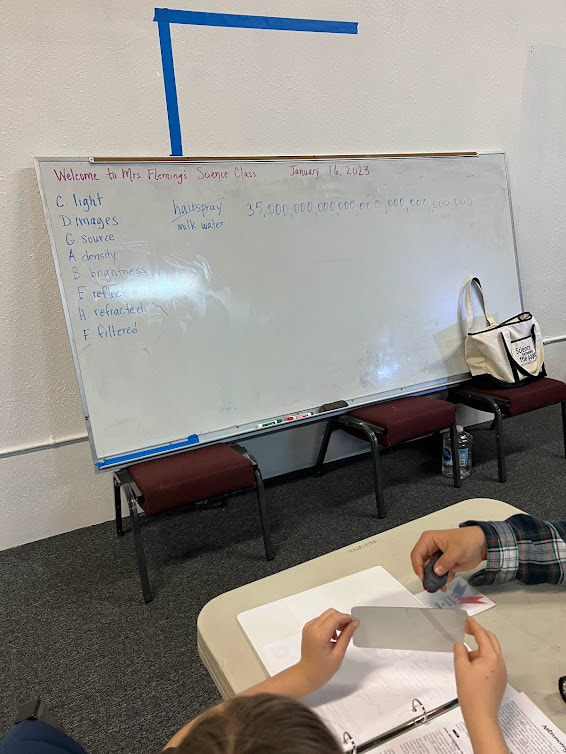
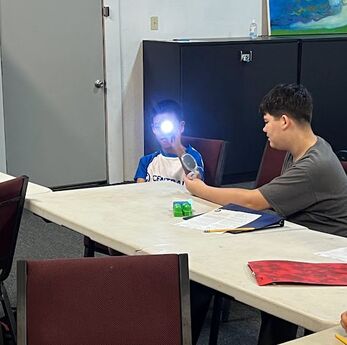
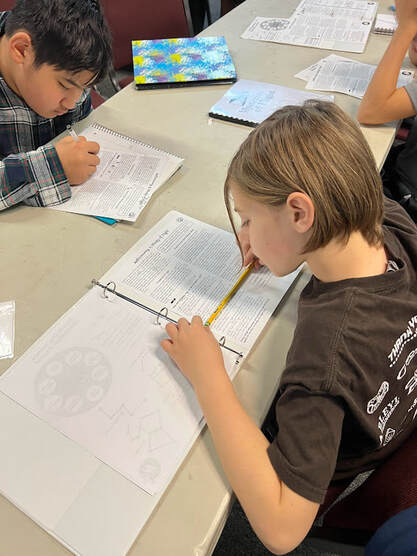
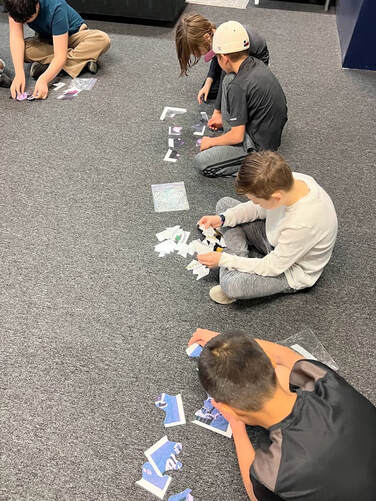
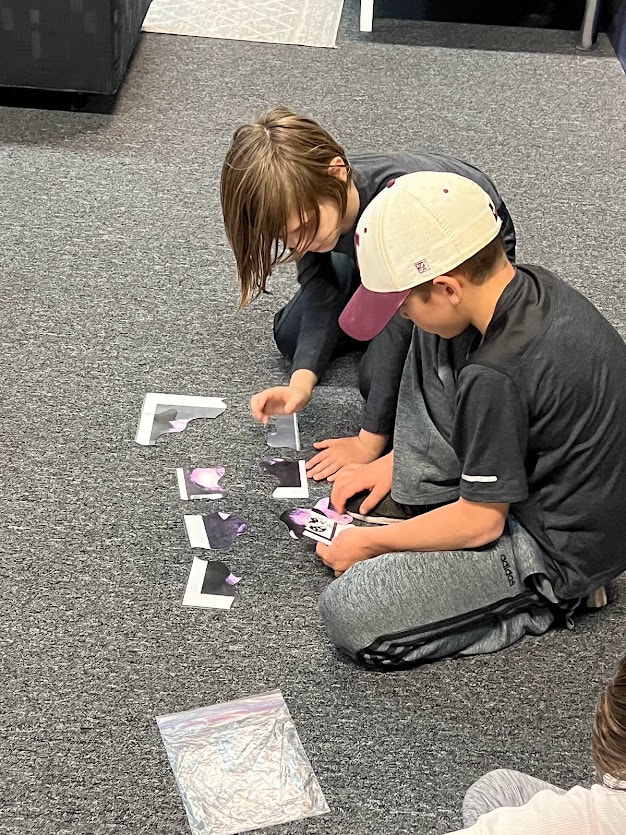
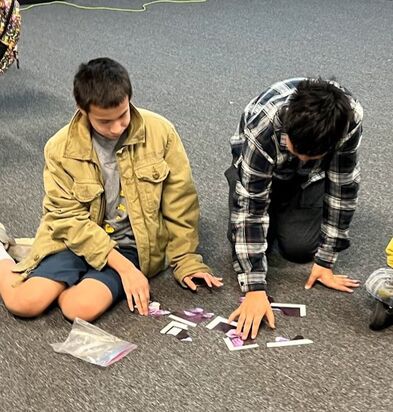
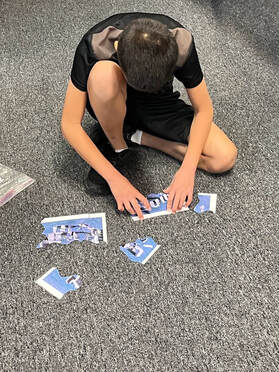
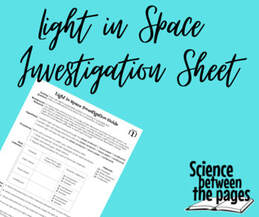
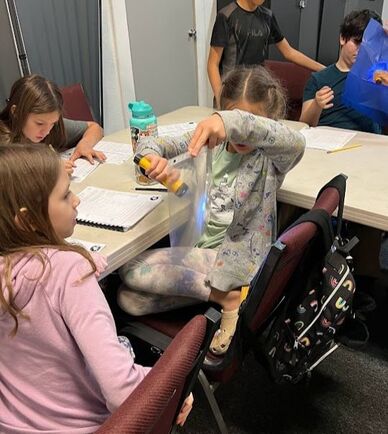
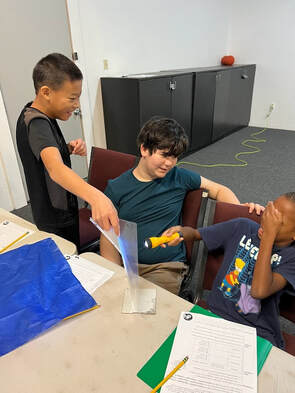
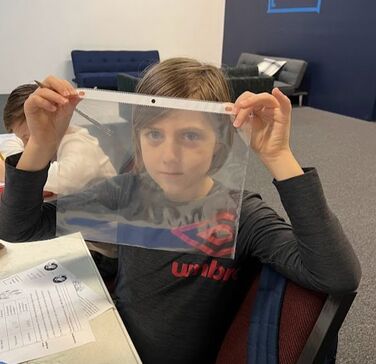
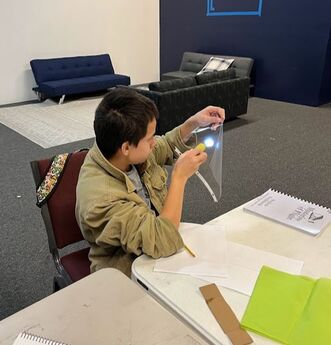
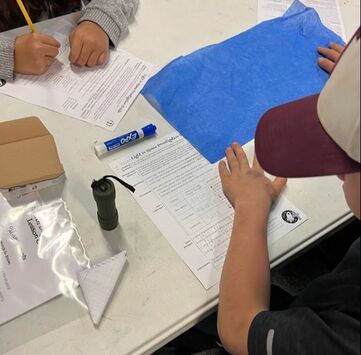
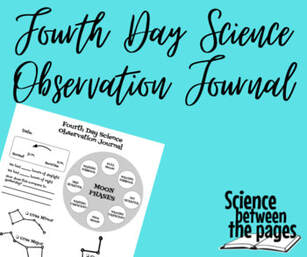
 RSS Feed
RSS Feed